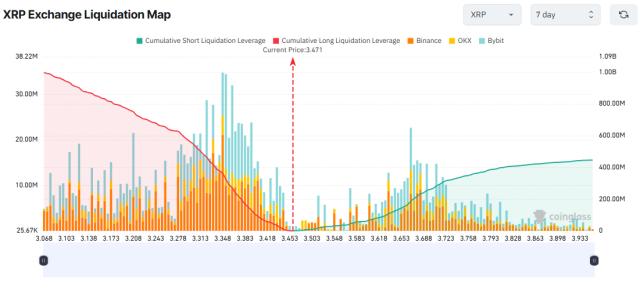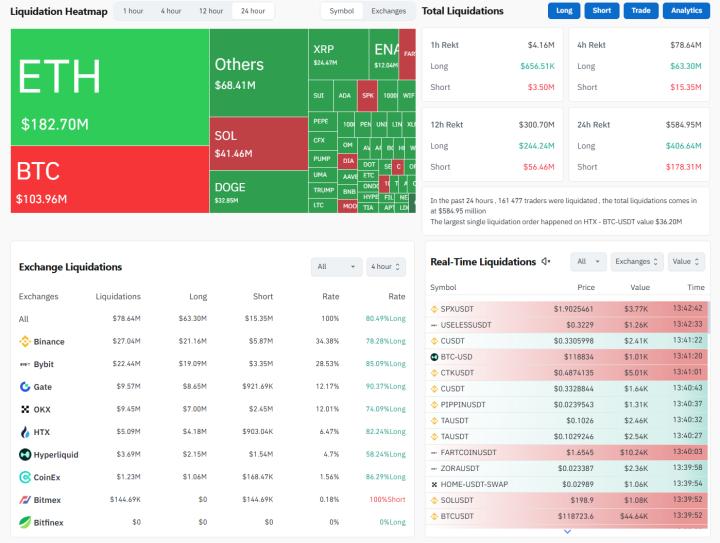Major players from the United States and China are entering the stablecoin field, with one profound driving force being the competition for digital hegemony. U.S. Treasury Secretary Becent clearly stated at a Senate hearing in June 2025 that stablecoins, especially those pegged to the U.S. dollar, will become an important tool for consolidating the U.S. dollar's position in the global financial system. Against this backdrop, some analysts predict that the stablecoin market value could reach $20 trillion or even higher in the future.

On June 19, Becent even tweeted again, "Cryptocurrencies will not threaten the U.S. dollar. In fact, stablecoins can consolidate the dollar's hegemonic status. Digital assets are one of the most important phenomena in today's world, yet have long been ignored by governments. This administration is committed to making the United States the center of digital asset innovation, and the GENIUS Act brings us one step closer to this goal."
[The rest of the translation follows the same professional and accurate approach, maintaining the original meaning while translating into clear English.]Chinese internet companies are embarking on an exploratory journey, but the ambitions of American financial giants like Visa actually began as early as 2020, though they initially withdrew from the Facebook-led Libra (now Diem) project due to regulatory uncertainty.
With the gradual implementation of regulatory frameworks like the Genius Act, Visa adjusted its strategy and turned to collaborating with regulated stablecoin issuers. In 2025, Visa officially joined the Global Dollar Network (USDG) stablecoin alliance initiated by blockchain company Paxos, becoming the first traditional financial institution to participate in the alliance. This means that Visa indirectly gains legal support for stablecoin issuance and settlement through alliance membership under a compliant framework. Additionally, Visa has partnered with African cryptocurrency exchange Yellow Card to promote stablecoin payments in the Central and Eastern Europe, Middle East, and Africa (CEMEA) region.
Visa's technological layout focuses on seamless integration of stablecoins with existing payment systems. In 2023, Visa was the first to support USDC stablecoin settlement, becoming the first global payment network to introduce stablecoins into its core clearing system. Its technical architecture connects with on-chain smart contracts through Visa Token Service, enabling stablecoin payments to be embedded in automated settlement, profit sharing, and other business processes. For example, Visa's cross-border payment API now supports real-time stablecoin settlement, reducing cross-border payment arrival time from days to seconds and lowering costs to below 0.1%.
PayPal, a predecessor to Ant Group, also had an early layout in stablecoins. Since its launch on the Ethereum mainnet in August 2023, PayPal USD (PYUSD) has quickly evolved from a point-to-point experiment to a multi-chain, enterprise-level payment tool. The stablecoin was developed by PayPal in collaboration with Paxos Trust Company and is 100% collateralized by US dollar deposits, short-term US Treasury securities, and similar cash equivalents. Paxos regularly issues reserve audit reports to ensure transparency and regulatory compliance. From the beginning, PayPal enabled seamless fund transfers between PayPal and Venmo balances and Ethereum-based wallets, truly integrating traditional payment channels with decentralized financial channels, providing near-instant settlement and global coverage.
In May 2024, PayPal announced PYUSD's launch on the Solana blockchain, aiming to leverage Solana's sub-second finality and extremely low transaction fees for faster, lower-cost transfers. Major wallets and onramp providers like Crypto.com, Phantom, and Paxos were the first to integrate, helping users acquire PYUSD on the Solana chain.
This move not only expands the stablecoin's application in retail payments and cross-border remittances but also attracts developers to integrate PYUSD into acquiring systems, DeFi protocols, and Web3 applications. As of June 2025, the PYUSD issuance on the Solana network exceeded $300 million. In the future, PayPal plans to extend PYUSD support to more Layer 2 networks and public chains, continuously optimizing smart contract functions to meet merchants' diverse needs.
Interestingly, Wall Street giants are not falling behind. In 2019, JPMorgan introduced JPM Coin for institutional clients, used for internal cross-border payments and clearing, with an average daily transaction volume of about $1 billion, demonstrating its high-frequency application in institutional scenarios. However, JPM Coin is limited to Morgan's internal network and does not circulate on public chains.
In mid-June 2025, JPMorgan announced the launch of "JPMD" deposit tokens based on Coinbase's Layer 2 network Base. Unlike traditional stablecoins, JPMD represents actual bank deposits and plans to be included in federal deposit insurance, aiming to provide compliant, auditable digital deposit certificates for institutional clients while following strict KYC/AML processes to support near-real-time 24/7 settlement and liquidity management.
It's not difficult to see that these internet and financial monopolies are all entering the field, eyeing the new track of stablecoins.
Summary
In the future, the mission of stablecoins is to accelerate cross-border payment transformation, break the monopoly of traditional banks and SWIFT, achieve 7x24 hour real-time arrival, and approach zero-cost global fund flow, becoming the core tool for remittances in developing countries and international trade settlement. Stablecoins will not only be a subset of cryptocurrencies but may also become a key force in reconstructing the global monetary order and financial infrastructure.
"Stablecoins are unlikely to completely replace traditional payment systems, but will gradually reconstruct value circulation paths with lower costs, stronger programmability, and global interconnectivity. In the short term, stablecoins will 'nested-substitute' traditional payment systems in certain scenarios such as cross-border e-commerce, freelance settlement, and game advertising payments. In the medium to long term, stablecoins are expected to form a new generation of on-chain payment and clearing infrastructure, 'dual-track parallel' with traditional systems and potentially gradually replacing traditional payment systems in some scenarios. In the long run, stablecoins will become an important pole of global payment infrastructure," said Alex Zuo, Senior Vice President of Cobo and Head of Stablecoin Business, to Foresight News.
However, the risks faced by numerous companies rushing into the stablecoin track cannot be ignored. Liu Honglin, a lawyer from Shanghai Mankun Law Firm, told Foresight News that stablecoin issuance is a matter of governance structure, risk control boundaries, and regulatory dialogue.
First, the early structural planning must be clear. In Hong Kong, from the beginning, the operational path must be designed to comply with the Stablecoin Ordinance, including license applications, reserve trust structures, information disclosure systems, and director compliance reviews. The approach of "issue first, comply later" is strictly prohibited, with the Hong Kong Monetary Authority explicitly banning unlicensed issuance.
Second, compliance budgets should be fully reserved. Stablecoins are not a light-asset project; reserve fund custody, audit report preparation, IT system security testing, daily operations, and legal compliance personnel allocation are all long-term expenses. It is recommended to establish a dedicated compliance budget pool and set up third-party risk control mechanisms, such as regular external reviews.
Third, a neutral corporate governance system must be established. Avoid structural defects such as absolute control by the parent company, lack of director independence, and absence of internal review processes for major matters. The Monetary Authority has clear precedents for rejecting "non-transparent beneficial owners" and "uninsulated governance".
For ordinary users, to avoid the lessons of the UST collapse, users need to focus not only on the project's mechanism design but also on whether its "redemption promise is credible". Although Hong Kong and the United States continue to introduce regulatory measures, retail investors still need to be vigilant when choosing stablecoin asset allocations to avoid losses. "The core of stablecoins is not whether the technical means are innovative; payment design can prevent systemic risks, but this does not mean risks are eliminated," said Lawyer Liu Honglin candidly.
Disclaimer: As a blockchain information platform, the articles published on this site represent only the personal views of the authors and guests, and are not related to Web3Caff's stance. The information in the article is for reference only and does not constitute any investment advice or offer. Please comply with the relevant laws and regulations of your country or region.
Welcome to join the Web3Caff official community: X(Twitter) Account丨Web3Caff Research X(Twitter) Account丨WeChat Reader Group丨WeChat Official Account








